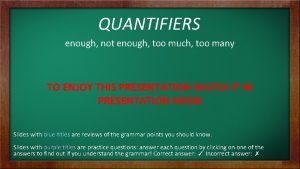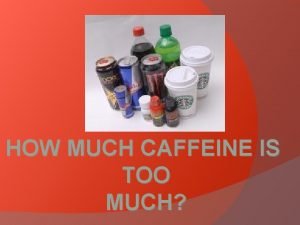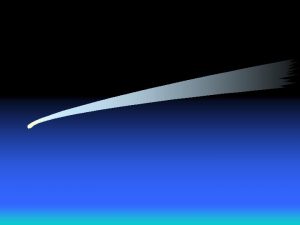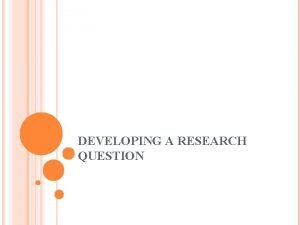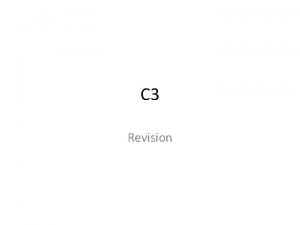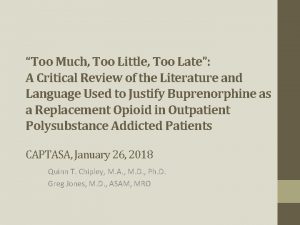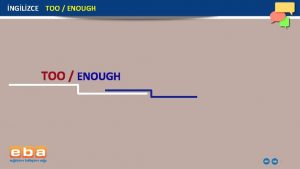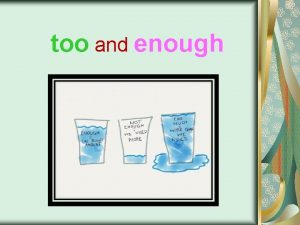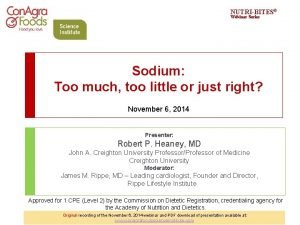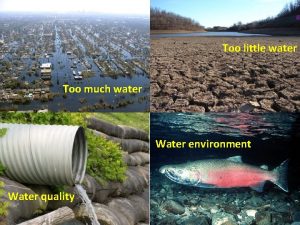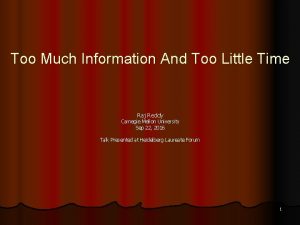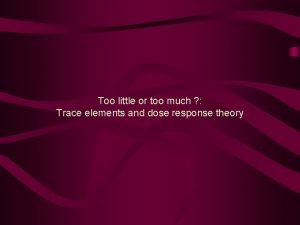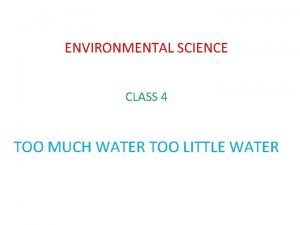How Much Acid is Too Much Target 7















- Slides: 15

How Much Acid is Too Much? Target 7 -2

What We Know �The p. H of normal ocean water is_____ �The p. H of the oceans now is ____ �Rivers keep the ocean p. H stable by ______

What We Know �The p. H of normal ocean water is 8. 1 -8. 2 �The p. H of the oceans now is ____ �Rivers keep the ocean p. H stable by ______

What We Know �The p. H of normal ocean water is 8. 1 -8. 2 �The p. H of the oceans now is 8. 0 -8. 1 �Rivers keep the ocean p. H stable by ______

What We Know �The p. H of normal ocean water is 8. 1 -8. 2 �The p. H of the oceans now is 8. 0 -8. 1 �Rivers keep the ocean p. H stable by acting as a buffer

Recap �Acids are substances that increase the amount of H 3 O+ in a sample

Recap �Weak Acids: �Dissociate partially (not completely) �Stay at equilibrium �Ex) C 2 H 5 COOH + H 2 O <-> C 2 H 5 COO- + H 3 O+

Recap �When a weak acid dissociates, it creates its conjugate base �Ex) C 2 H 5 COOH + H 2 O <-> C 2 H 5 COO- + H 3 O+

Recap �Conjugate Base: a molecule made when an acid loses its acidic hydrogen �Acts like a very weak base �Is able to react with H+ to re-form the original acid

Buffers �A buffer solution is a solution containing a weak acid and its conjugate base or a weak base/conj. acid �Solution is at equilibrium �Will react with a strong acid or strong base

Buffers �Remember that when acid is added to water, H 3 O+ ions are formed: �HCl H+ + Cl�H+ + H 2 O H 3 O+

Buffers �When acid is added to a buffer solution, those H+ ions react with the weak base in the buffer before they react with the water �HCl H+ + Cl�H+ + H 2 O + Na. HCO 3 Na. H 2 CO 3 + H 2 O �The H 3 O+ ion doesn’t form, so the p. H changes less

Demo �We are going to add strong acid to water and to a buffer solution. �Record the p. H of each solution after each drop is added.

Reflect �What happened when we added acid to water? �What happened when we added acid to the buffer?

In the Ocean �Primary Ocean Buffer System: Na 2 CO 3 + H+ <-> Na. HCO 3 �Na. CO 3 is formed when: �Carbonate ions (CO 32 -) from bedrock flow from rivers into the ocean �Carbonate reacts with sodium ions (Na+) from the salt in ocean water
 Quantifiers too much too many enough
Quantifiers too much too many enough Too much money is chasing too few goods
Too much money is chasing too few goods How much is too much plagiarism
How much is too much plagiarism How much caffeine in a snickers bar
How much caffeine in a snickers bar Example of rationale
Example of rationale Too anointed to be disappointed meaning
Too anointed to be disappointed meaning Too broad and too narrow examples
Too broad and too narrow examples Too broad and too narrow examples
Too broad and too narrow examples Just right scale
Just right scale Not too broad and not too narrow
Not too broad and not too narrow Too foreign for home
Too foreign for home Primary target market and secondary target market
Primary target market and secondary target market Your friend talk/talks too much
Your friend talk/talks too much Deacon process reaction
Deacon process reaction Religious imagery in romeo and juliet act 1, scene 5
Religious imagery in romeo and juliet act 1, scene 5 What to use for nitrogen for plants
What to use for nitrogen for plants
